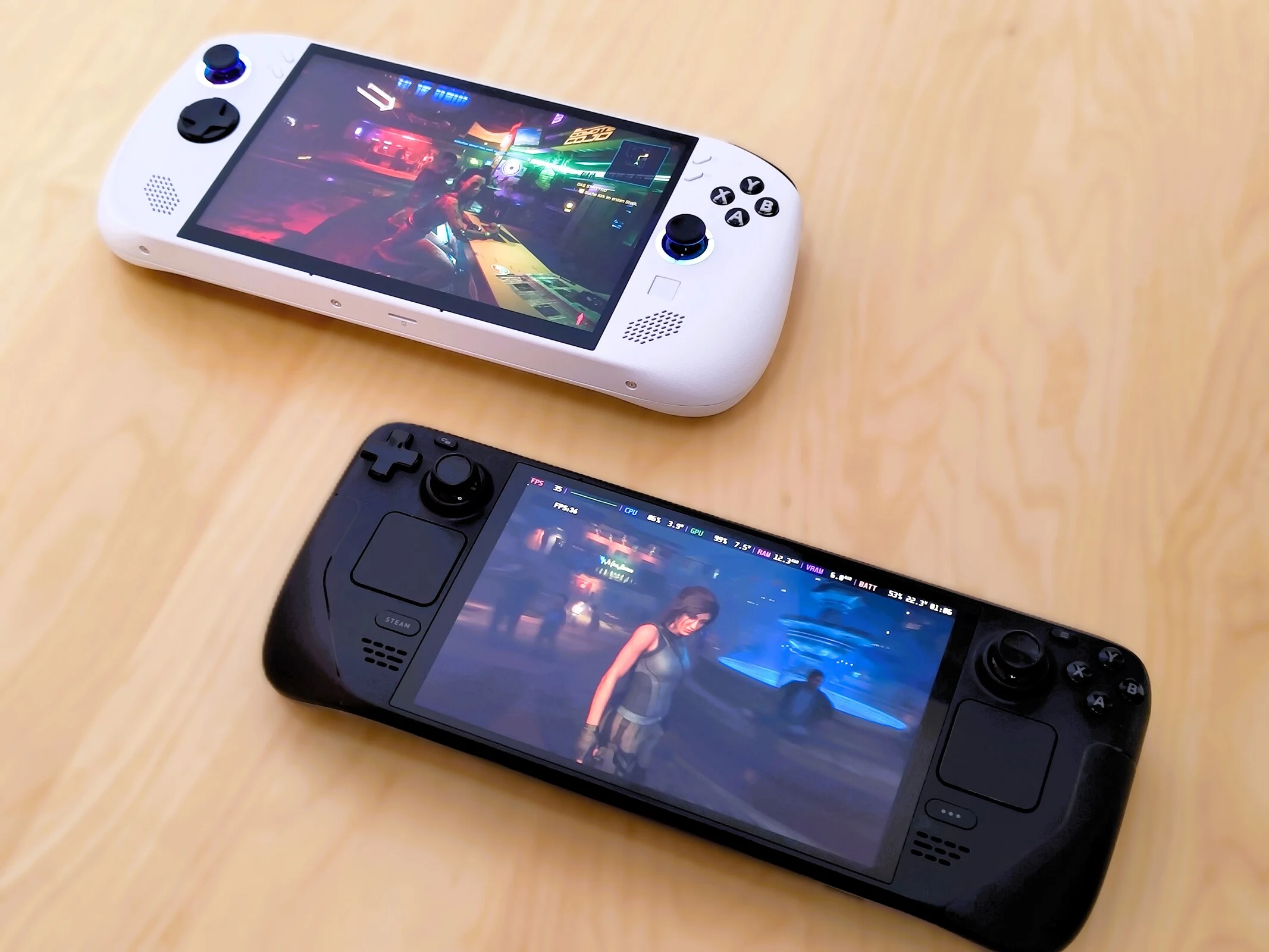Key Takeaways
1. Market Competition: The handheld gaming market is crowded, with brands like Acer, Asus, Lenovo, and MSI entering later than competitors like OneX and Ayaneo.
2. Essential Features: Key features for successful handhelds include a user-friendly operating system (preferably Windows), quality controls, good cooling systems, and a bright, high-resolution display.
3. Durability and Repairability: Controls should be durable and easy to repair, with hall-effect sensors gaining popularity for their reliability.
4. Power and Storage Requirements: Modern handhelds need sufficient power, with at least 16 GB of RAM and a quick NVMe SSD of 512 GB or more for optimal gaming performance.
5. Performance vs. Battery Life: Balancing performance and battery longevity is crucial for a good handheld gaming experience, with high-capacity batteries and software optimizations being important for extended play.
Acer, Asus, Lenovo, and MSI have entered the handheld gaming scene somewhat later than others. In contrast, Asian brands like OneX and Ayaneo were quick to capture some of the market share from Valve’s Steam Deck.
A Crowded Market
Today, the handheld gaming market is nearly filled with numerous ultra-compact devices. This variety can confuse buyers, particularly those who are new to gaming and unsure of what to seek. Moreover, companies are constantly on the lookout for new niches to cater to with their products.
Key Features of Handhelds
Our analysis of the Lenovo Legion Go S indicates that several aspects contribute to a successful gaming handheld. This raises the important question: What features are essential in a handheld console?
Many handheld devices prefer Windows as their operating system due to its vast game library. On the other hand, Linux stands as a viable option, as demonstrated by Valve’s Steam Deck. A straightforward and easy-to-use interface is crucial, and the Steam Deck excels in this area. However, without extra software, the Steam Deck is limited to the offerings of Steam.
Windows 11, while popular, is only somewhat tailored for touchscreens and game controllers. Many brands include additional software to enhance performance or add features. Moreover, launchers help optimize control schemes.
Design and Comfort
A handheld must not only be visually appealing but also comfortable to use. It should be lightweight and compact to allow for extended play without causing discomfort in the hands or wrists. Using high-quality materials and solid craftsmanship is vital here. Good cooling systems are essential too; nobody wants a device that overheats and feels like a hot plate.
Controls form the core of any handheld device. They must provide accurate control and be easily accessible. Quality buttons with a satisfying click, precise analog sticks, and extra input options like touchpads or programmable buttons are crucial. Adequate haptic feedback, typically from vibration motors or specialized motors like those in the Steam Deck, is also important. There can be significant differences in this regard depending on the model.
Durability and Repairability
It is also critical for controls to be as durable as possible. In recent years, hall-effect sensors have gained attention for their reliability. While some controllers, such as those from PlayStation or Nintendo Switch, feature easily replaceable parts, repairing handheld devices can be a tedious process, often involving long wait times, especially when spare parts are scarce.
A display that is merely adequate won’t do for gaming handhelds. Brightness and contrast are key for visibility during daylight. The resolution is also important—devices under 7 inches (approx. 18 cm) can work well with 720p or 1080p. While 2.5K displays offer quality, they also consume more power and need to be supported by the graphics chip. The response time of the display is another element to consider. A bright IPS screen is the baseline, while OLED displays are considered the best.
Power and Storage Needs
Of course, gaming performance is pointless without sufficient power. Even the 15-watt APU in the Steam Deck provides a capable experience. Modern integrated GPUs like the Intel Arc with 128 EUs or AMD Radeon 780M and higher are ideal for this purpose, allowing for decent frame rates in current games. It’s also essential to have at least 16 GB of RAM, as the integrated GPU shares RAM with the CPU, reserving at least 4 GB for graphics.
A quick NVMe SSD with a minimum of 512 GB, ideally 1 TB, is essential. More space is better since Windows takes up around 30 GB. Large games can require an additional 60 to 90 GB, so smaller SSDs fill up fast. Additionally, Windows requires at least 10% of the SSD to be free for optimal performance, meaning users should limit their usage to about 75% of total storage space to avoid slowdowns.
Balancing Performance and Battery Life
An excellent handheld should not only deliver power but also boast long battery life. Striking a balance between performance and battery longevity is vital. A high-capacity battery is crucial for marathon gaming sessions, and software tweaks can further improve battery performance.
Modern handhelds offer plenty of options for gamers. For instance, upscaling along with FPS limitations can help many AAA games run smoothly at lower power levels.
Our examination of the Lenovo Legion Go S showed it to be an intriguing device with potential in certain areas. Nonetheless, it also comes with some drawbacks that buyers should weigh before making a purchase. Gamers are encouraged to conduct thorough research and clarify their needs ahead of time. Depending on budget and gaming preferences, various devices may be suitable.
The Legion Go S, for instance, impresses with its comfortable design. However, the APU’s performance is less impressive. The Ryzen Z2 Go doesn’t exactly wow us, but it does offer some benefits, particularly when compared to the Steam Deck. Yet, other modern alternatives are significantly stronger in this aspect.


Leave a Reply